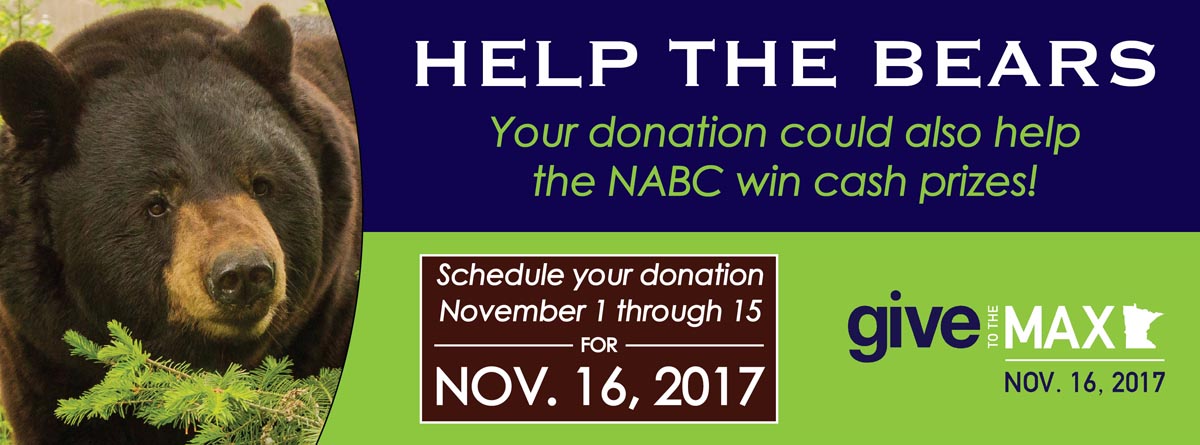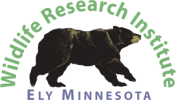50th Anniversary Year - UPDATE November 13, 2017
In this 50th anniversary year of my black bear research, the team suggested I name this year’s cubs in Shadow’s Clan after people who have helped along the way. Dr. Rogers with cubs
Dr. Rogers with cubs
Dr. Ralph Blouch, Research Director for the Michigan Department of Conservation, selected me from dozens of undergraduate applicants for one of the two 1967 summer internships at Cusino Research Station. Ellie’s male cub is Ralph.
Dr. Louis Verme, Director of the Cusino Research Station, was good to grant my request for the bear research internship. One of Donna’s male cubs is Lou.
El Harger, my immediate boss in that job, taught me a lot and was good to leave me in charge, capturing bears for a month while he was on vacation. Donna’s other male cub is El.
Dr. Albert Wendell Erickson, who pioneered bear capture methods for research, worked with me for a week during the month I was in charge. He ended up accepting me as his graduate student at the University of Minnesota even though I had another year of undergrad to complete at Michigan State University. To make that work, he held open a paid Ph.D. position for over a year. In that position, I would conduct the first field study of black bears ever done in Minnesota. To give me more experience for that, he arranged for me to be the first intern ever asked to return for a second summer at the Cusino Research Station. After completing that internship in summer 1968, I arrived at the University of Minnesota to find I was enrolled in the prestigious new Department of Ecology and Behavioral Biology that was designed to train students for research. Ursula’s two male cubs are Albert and Wendell.
 Dr. Rogers with cubsWallace and Mary Lee Dayton funded my graduate research position. Daisy’s three cubs are Wally, Mary Lee, and Dayton.
Dr. Rogers with cubsWallace and Mary Lee Dayton funded my graduate research position. Daisy’s three cubs are Wally, Mary Lee, and Dayton.
During fall 1968 to spring 1971, I discovered that Minnesota’s black bear population had been severely decimated. For decades, they had been managed as varmints with bounties being paid to kill them in any way at any time. Excessive public fear prevented legislators from adding these misunderstood animals to Minnesota’s protected list. Residents wanted the right to shoot bears on sight—commonly gut-shooting them so they would die elsewhere. To pave the way for legislation, I began lecturing across Minnesota and using the many media opportunities that came with my bear study to change attitudes. I teamed up with Dick Anderson, president of the Minnesota Archery Association; Representative Cal Larson, and Senator Cliff Ukkelberg. Together, we were able to introduce and pass the necessary legislation in spring 1971. Bears named Dick and Cal will carry those names in honor of Dick Anderson and Representative Larson.
Dick Anderson and I dedicated ourselves to educating the public about bears—Dick through DNR Bear Hunter Education Classes he founded, and me in other ways.
 Dr. Rogers with cubsDNR Wildlife officials were delighted with our legislation. Upcoming official Roger Holmes was among them. Fish and Wildlife Director Dave Vesall asked me to write bear-hunting regulations and present them at the season-setting session. I reduced the season from 52 weeks to 6, made bear-hunting more humane, prohibited shooting bears in dens, and set the population on the road to recovery. DNR Commissioner Bob Herbst wrote a wonderful thank you letter. The population quadrupled over the next two decades. One of Lily’s male cubs is Dave.
Dr. Rogers with cubsDNR Wildlife officials were delighted with our legislation. Upcoming official Roger Holmes was among them. Fish and Wildlife Director Dave Vesall asked me to write bear-hunting regulations and present them at the season-setting session. I reduced the season from 52 weeks to 6, made bear-hunting more humane, prohibited shooting bears in dens, and set the population on the road to recovery. DNR Commissioner Bob Herbst wrote a wonderful thank you letter. The population quadrupled over the next two decades. One of Lily’s male cubs is Dave.
In 1974, I expanded my study with grants from national, Washington-based organizations. NRA Conservation Director Cliff Morrow became a friend and advocate. After I gave an invited talk at an NRA Annual Conference, the NRA gave me more money than they had given to any other research project. Military officials were present at the conference. In a hallway, I asked Cliff if he thought there was any chance of getting a night vision scope from the military. He said, ask that guy there. I did. He looked at Cliff, who nodded. The man wrote a number for me to call and said, “Tell him Admiral Kidd said to call.” “Wow,” I said, “But how can you tell him to send me that.” He said, “I’m the head of Naval Material.”
Harvard professor Bob Trivers happened to be on sabbatical at the University of Minnesota when a paper I wrote won the Anna M. Jackson award from the American Society of Mammalogists in 1974. Back at Harvard, he showed it to professor E. O. Wilson who was writing a book. The book “Sociobiology” came out the next year—the cover story on Time Magazine. It recognized my study as one of the 4 top studies of large mammals in the world—alongside Jane Goodall’s study of chimpanzees, and other researchers’ studies of lions and elephants.
As my study grew, word spread. Washington-based organizations began calling to give money unsolicited. The Washington Office of the U. S. Forest Service took note and began considering a USFS research position for me. They sent two officials to Minnesota to work with me and vet me. USFS researcher Dr. Bob Brander had made a similar position recommendation for me at the regional level, and he joined the officials in working with me. I was still a graduate student, and we had fun joking about my high-priced help. In the research position, I would continue my bear study as a long-term USFS project while designing similarly innovative studies for other species. USFS official Charlie Cushwa asked me if I could use my connections in Washington to obtain initial funding from Congress for the position. I called Cliff Morrow. He called Senator Hubert Humphrey who then ran it through congress. The appropriation materialized and in 1976 became a line item. The job was announced. I was ranked number one in the usual national competition and began work August 15, 1976. One of Star’s cubs is Cliff for Senator Cliff Ukkelberg and NRA Conservation Director Cliff Morrow. Wendy’s two males are Wilson and Bob. In carrying the name Bob, Wendy’s cub represents Commissioner Bob Herbst, Professor Bob Trivers, Researcher Dr. Bob Brander, and Bob Leverett, President of the Eastern Native Tree Society (below).
More to come.
 https://givemn.org/organization/bears
https://givemn.org/organization/bears
Give to the Max Day is Thursday the 16th. The staff will be on the Live Camera named Special Live Events all day. Director Scott Edgett will have various guests with him in this marathon broadcast. Donna and I are invited to join him at 8 AM and 7 PM. Everything else will be a surprise to you and me.
Thank you for all you do.
Lynn Rogers, Biologist, Wildlife Research Institute and North American Bear Center
